
written by Prof.
Akira SATOH
on 1st of January,
2012
Results between 2001 and 2005
1. Development of Stokesian Dynamics Method
based on the Additivity
of
Velocities
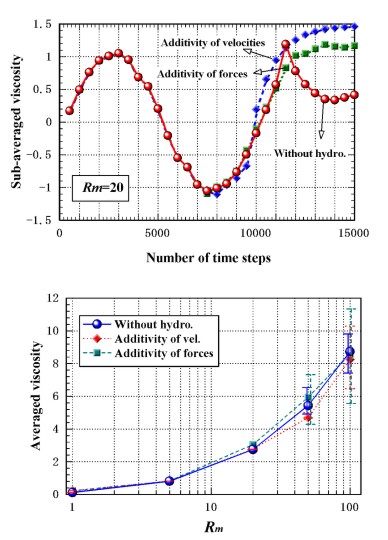
We have proposed
the cluster-based Stokesian
dynamics method based on the additivity of
velocities and have verified the feasibility of this
method.
The results of the viscosity are in good
agreement
with those obtained by the additivity of forces in the
wide
range of magnetic interactions between
particles.
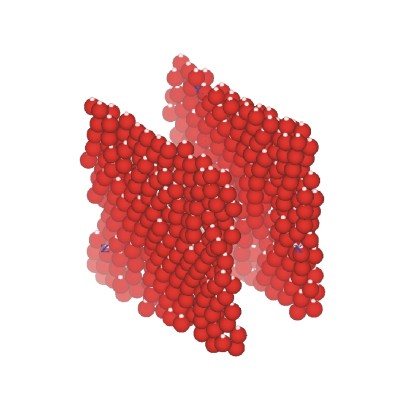
Wall-like
aggregate structures are clearly shown
to be formed by the present
Stokesian dynamics
method based on the additivity of velocities.
2.
Development of the Cluster-based Stokesian Dynamics Method
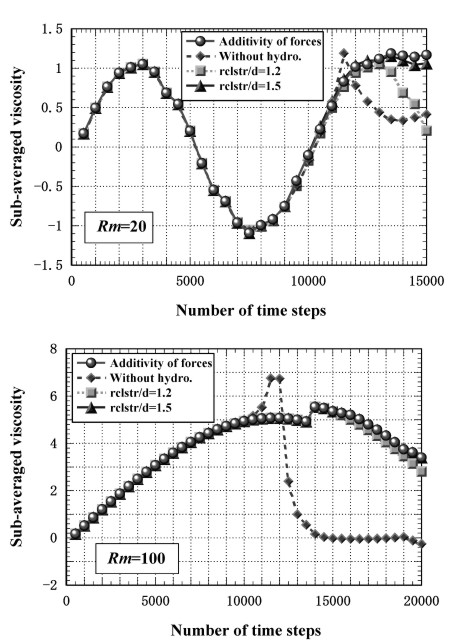
We have proposed the cluster-based
Stokesian
dynamics method based and have verified
the
validity of this method.
The figure clearly shows that
the viscosity change
is in good agreement with that of the
method based
on the additivity of
forces.
(a) For the case of a weak magnetic interaction
between
particles.
(b) For the case of a strong magnetic
interaction
between particles (much larger than the influence
of a shear
flow)
3. Derivation of the Transport Coefficients by Means of the
Perturbation
Method in the Dissipative Particle Dynamics
Theory
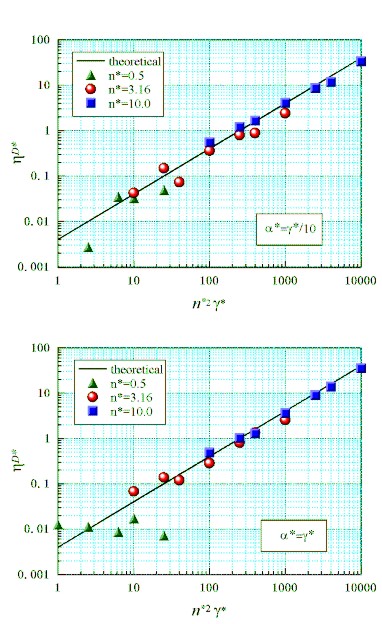
Theoretical values
of the viscosity which have been
derived theoretically by means of the
perturbation
method are in good agreement with those obtained
by the
non-equilibrium dynamics method.
(a) For the case of the dissipative interaction being
much larger than the potential
interaction
(b) For the case of the dissipative interaction being
approximately equal to the potential
interaction
4. Development of
the Theory of the Orientational Distribution Function
of Magnetic
Rod-like Particles in a Simple Shear Flow (Consideration
of
Cluster-Cluster Interactions in Terms of Mean Field Approximation)
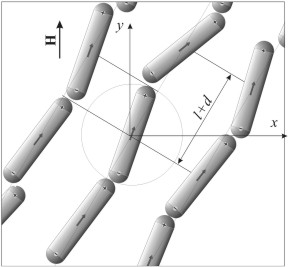
A
linear cluster model has been employed for taking into
account the interactions between the
particles belonging
to the different
clusters.
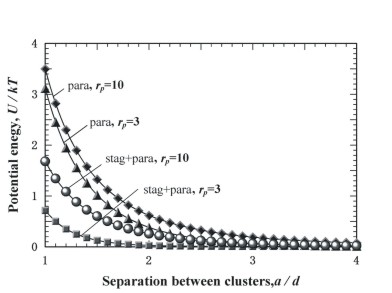
In order to discuss the
validity of the cluster
model, we have discussed the potential curves
for
the two different arrangements (parallel
and staggered
arrangements)
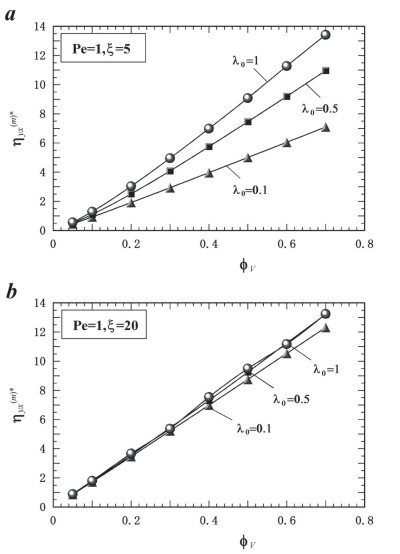
The figure shows the dependence of the viscosity
on
the volumetric fraciotn of particle. A larger
viscosity can be obtained
for a larger magnetic
interaction and volumetric fraction.
(a)
For the case where the magnetic field governs
the phenomenon to a
certain degree.
(b) For the case where the magnetic field governs
the phenomenon
significantly
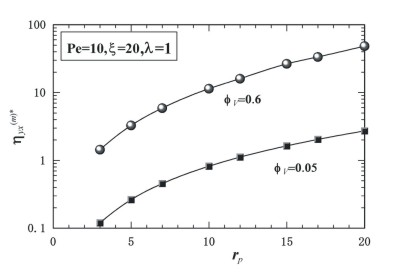
The figure shows the dependence of the viscosity
on the
particle aspect ratio. A particle with a larger aspect ratio
can provide a larger viscosity.
5. Theoretical Prediction of Negative Viscosity
of Rod-like Hematite Particles
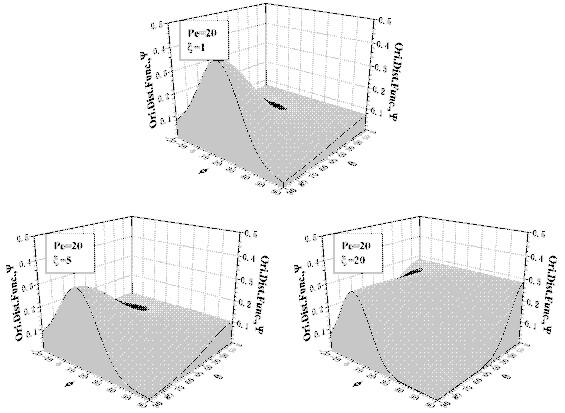
One-peak type distribution is
obtained for the case
where
the shear flow is dominant and
an applied magnetic field is weak.
As the
magnetic field strength
increases, the distribution
changes from a
one-peek to a
linear-peek type
distribution.
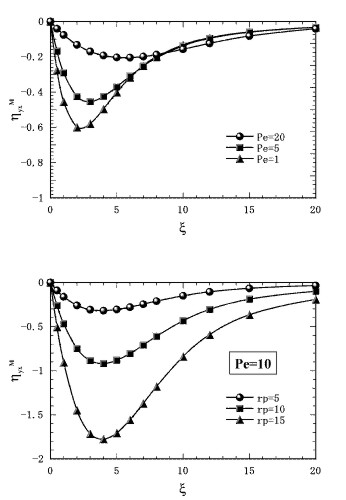
We have first theoretically shown that the viscosity
due
to magnetic properties becomes NEGATIVE, called
the negative
magneto-rheological effect, as the magnetic
field strength increases.
(a) The influence of the magnetic field strength on the
negative
viscosity.
(b) The influence of the particle aspect ratio on
the
negative viscosity.
A larger effect of the negative viscosity can
be obtained
for a particle with a larger aspect
ratio.
END. 










